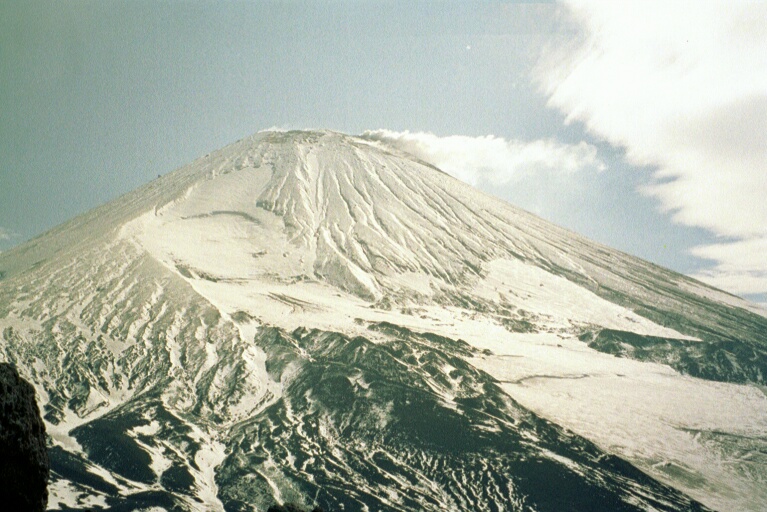
A special challenge is the ascent to the top of the Kluchevskoy Volcano, with the 4,750 m the biggest alive volcano in Eurasia. Because of its nearly perfectly conical shape, to climb Kluchevskoy is to be constantly bombarded by falling rock and ice. In average, the eruptions of this volcano took place every five years, not only from the central crater, but from so called "parasite" craters too. However, the eruptions never imposed a severe danger upon the inhabitants of Kluchi, a town 30 km away from the volcano.
The relatively short (1,486 m) and young (6,100 years old) Karymsky Volcano is the most active one in Kamchatka. Repeated gas and ash outbursts are the normal activity of the Karymsky Volcano between the eruptions. The eruption in year 1996 coincided with an under-water eruption in the Karymsky lake that is 6 km away from the volcano. As a result the Karymsky lake that used to be ultra-fresh turned into the biggest natural reservoir of acid water in the world.
Especialy dangerous are eruptions of volcanoes, which slept thousands of years, e.g. Krakatoa or Vesuvius. The accumulated energy can blow up the whole mountain. Than a caldera is formed: large circular depression with many kilometers in diameter, e.g. the scenic Uzon caldera in Kronotzky National Park. It has a diameter of 10 km and its depression is bounded by steep cliffs.
